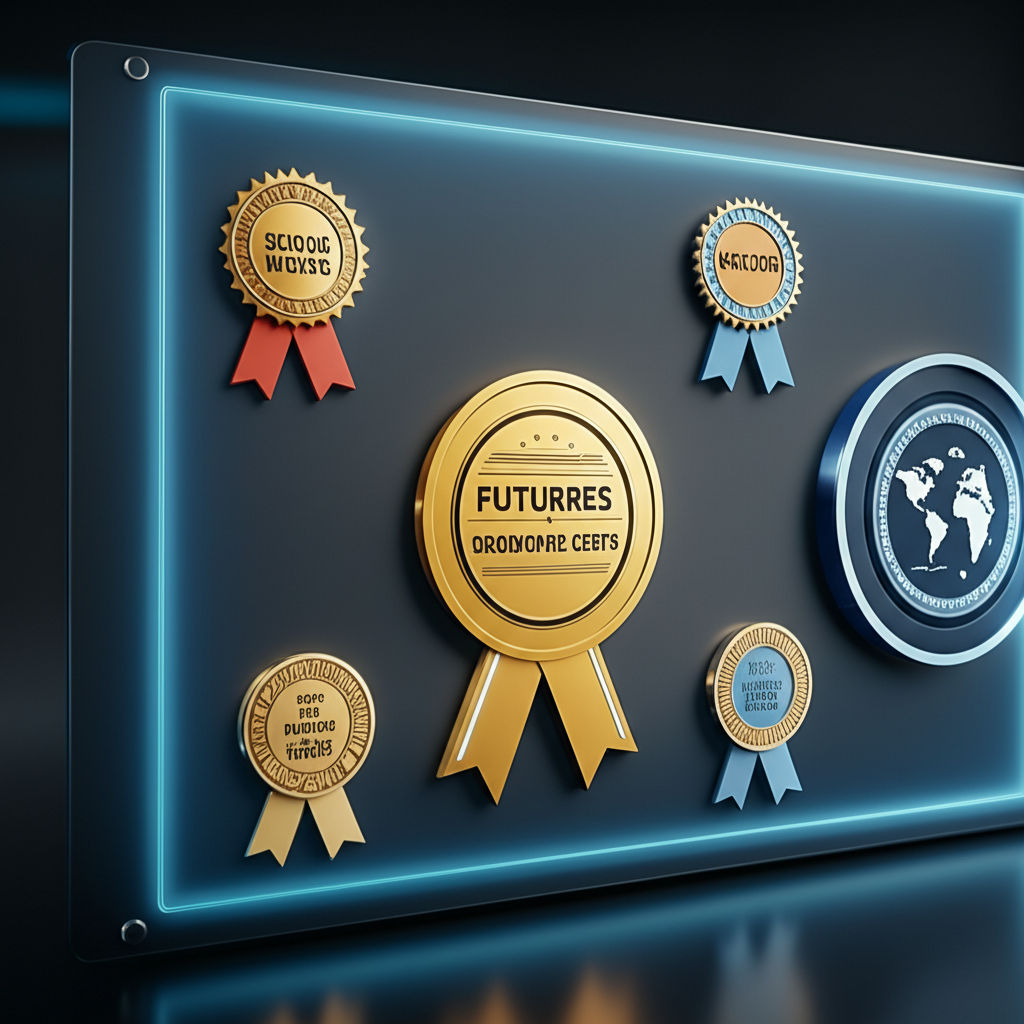Human Capital: Workforce of Tomorrow
Emily Willis

Photo: Human Capital: Workforce of Tomorrow
The landscape of work is undergoing a profound transformation, driven by technological advancements, evolving employee expectations, and a global shift in how we define productivity and success. At the heart of this evolution lies Human Capital, the collective knowledge, skills, values, and experiences of an organization's workforce. Far from being merely a cost center, human capital is increasingly recognized as the most vital asset, the true engine powering innovation, resilience, and competitive advantage in the Workforce of Tomorrow.
This article delves into the critical role of human capital in shaping the future of work, exploring the key trends, actionable strategies, and leadership imperatives necessary to build a thriving, future-ready workforce.
Understanding Human Capital in a Changing World
Human capital encompasses more than just the number of employees; it's about the quality, potential, and strategic deployment of an organization's people. It includes their education, training, skills, health, and other attributes that contribute to economic value. In essence, it's the sum total of human capabilities that can be leveraged for organizational success.
The world is changing at an unprecedented pace. Digital transformation, the rise of artificial intelligence (AI) and automation, demographic shifts, and evolving societal expectations are all reshaping the workplace. In this dynamic environment, a robust focus on human capital is not just beneficial; it's a strategic imperative. Organizations that recognize and invest in their human capital are better positioned to adapt, innovate, and thrive.
Key Trends Shaping the Workforce of Tomorrow
Several interconnected trends are redefining the essence of the workforce and demanding a proactive approach to human capital management.
The Rise of AI and Automation: Collaboration, Not Replacement
Artificial intelligence (AI) and automation are no longer futuristic concepts; they are actively reshaping work processes across industries. From automating repetitive tasks to providing predictive analytics for talent management, AI is becoming an integral part of human capital management (HCM) systems. However, the narrative is shifting from human replacement to human augmentation. The future workforce will leverage both AI and uniquely human capabilities, such as creativity, empathy, and critical thinking.
AI can streamline HR functions like recruitment, onboarding, and learning and development, freeing up HR professionals for more strategic tasks. For example, AI can automate resume screening, predict employee turnover, and personalize learning paths. Organizations that empower workers to use AI effectively can see significant performance improvements, with some studies suggesting a nearly 40% improvement for highly skilled workers when AI is used within its capabilities.
The Gig Economy & Flexible Work Models: Beyond 9-5
The traditional 9-to-5, in-office work model is increasingly being supplemented by flexible work arrangements, including remote work, hybrid models, and the expanding gig economy. This shift provides businesses with agility and access to specialized skills, allowing them to scale operations based on project demands. For employees, flexibility has become a key consideration, impacting job satisfaction and work-life balance. Managing a blended workforce, which includes full-time employees, contractors, and freelancers, requires new strategies to maintain cohesive company culture and trust.
Skills Gap and the Imperative of Lifelong Learning
One of the most pressing challenges for the workforce of tomorrow is the widening skills gap. As industries evolve rapidly, the skills required for success are constantly changing. This necessitates a strong emphasis on lifelong learning, including upskilling (enhancing existing skills) and reskilling (learning new skills for different roles).
A "skills-first" approach is gaining traction, where organizations prioritize actual competencies over traditional credentials. This allows for more targeted development and better internal mobility. AI can play a crucial role here by identifying skill deficiencies, customizing training programs, and providing personalized learning paths.
Diversity, Equity, and Inclusion (DEI): A Business Imperative
Diversity, Equity, and Inclusion (DEI) are no longer just buzzwords; they are integral components of modern workplace culture and a strategic imperative for long-term success. Diverse teams bring a wider range of perspectives, fostering innovation, enhancing problem-solving, and boosting employee engagement. Companies that prioritize DEI are more likely to outperform financially and attract top talent. Authentic DEI efforts go beyond mere representation, focusing on creating environments where all voices are heard, opportunities are equitable, and every individual feels a sense of belonging.
Employee Well-being and Mental Health: Holistic Support
The focus on employee well-being has expanded significantly, moving beyond just physical health to encompass mental, emotional, financial, and social well-being. Workplace stress and burnout are critical concerns, and organizations are recognizing that a comprehensive approach to employee health enhances productivity, resilience, and competitive advantage. Investing in well-being initiatives, such as mental health resources, financial literacy workshops, and flexible well-being platforms, is crucial for attracting and retaining talent and fostering a supportive work environment.
Strategies for Building the Workforce of Tomorrow
To effectively navigate these trends and build a resilient workforce, organizations must adopt strategic human capital practices.
Investing in Learning & Development (L&D): Creating a Culture of Continuous Learning
Continuous learning and development are paramount. Organizations must shift from episodic training to a culture of perpetual learning.
- Personalized Learning Paths: Leverage technology, including AI, to offer tailored learning experiences that adapt to individual employee needs, learning styles, and career aspirations. This can include online courses, workshops, and certifications.
- Microlearning & On-Demand Resources: Provide easily accessible, bite-sized learning modules that employees can access as needed, supporting just-in-time skill acquisition.
- Internal Mobility Programs: Create clear career progression paths and opportunities for employees to move into new roles internally, supported by upskilling and reskilling initiatives.
Embracing Agile Methodologies in HR: Adapting to Change
Agile HR involves a flexible and iterative approach to managing people-related processes, allowing HR teams to respond swiftly to changing business demands. This means moving away from rigid, bureaucratic systems towards more adaptable, employee-centric approaches.
- Cross-functional Teams: Encourage collaboration and skill-sharing across departments, building versatile teams capable of tackling diverse challenges.
- Iterative HR Initiatives: Implement HR programs in short cycles, gathering feedback and making adjustments continually, rather than waiting for large-scale, infrequent overhauls.
- Data-Driven Decision Making: Utilize workforce analytics to gain real-time insights into employee performance, engagement, and retention, informing strategic HR decisions.
Leveraging Technology for Talent Management
Modern human capital management (HCM) solutions are crucial for streamlining HR processes and gaining valuable insights.
- AI-Powered Tools: Implement AI for tasks like talent acquisition (automating screening, predicting fit), performance management (predictive analytics for turnover), and personalized learning recommendations.
- Employee Experience Platforms: Focus on platforms that offer self-service portals, personalized dashboards, and mobile accessibility to enhance overall employee experience and engagement.
- Integrated HR Systems: Ensure seamless data flow across various HR functions (recruitment, payroll, learning, performance) to provide a holistic view of human capital.
Fostering a Culture of Innovation and Adaptability
A culture that encourages experimentation, learning from failure, and continuous improvement is essential. This involves:
- Psychological Safety: Creating an environment where employees feel safe to voice ideas, take risks, and even make mistakes without fear of retribution.
- Empowerment: Giving employees autonomy and ownership over their work, fostering a sense of purpose and increasing engagement.
- Feedback Loops: Establishing continuous, two-way feedback mechanisms between employees and management to facilitate real-time adjustments and improvements.
Prioritizing Employee Experience (EX): Beyond Engagement
Employee experience goes beyond mere satisfaction; it encompasses every interaction an employee has with their organization, from recruitment to exit. A positive employee experience is critical for attracting, retaining, and motivating talent.
- Holistic Approach: Consider all touchpoints: physical workspace, technological tools, organizational culture, and personal growth opportunities.
- Personalization: Tailor experiences where possible, recognizing that each employee has unique needs and preferences.
Leadership's Role in Navigating the Future Workforce
Leaders are the architects of the workforce of tomorrow. Their vision, commitment, and actions are pivotal in transforming human capital into a sustainable competitive advantage.
- Visionary Leadership: Leaders must articulate a clear vision for the future workforce, communicating its importance and inspiring employees to embrace change.
- Empowerment and Trust: Effective leaders empower their teams, trusting them to take initiative and make decisions. This fosters a sense of ownership and responsibility.
- Empathy and Emotional Intelligence: In an era of rapid change and increased focus on well-being, leaders need strong emotional intelligence to understand and respond to employee needs, fostering a supportive and inclusive environment.
- Championing DEI: Leaders must actively champion Diversity, Equity, and Inclusion, embedding
Latest ✨
View AllUncover the invisible market forces shaping prices & production. Learn how supply & demand drive our economy—essential for consumers & businesses.
Emily Willis
Market research: your ultimate business compass. Gain vital insights on customers, competitors & trends to steer your business to growth & success.
Emily Willis
Discover why economic planning is the strategic roadmap for national development, ensuring efficient resource allocation, prosperity, and a stable future.
Emily Willis
Boost employee potential & growth! Discover how modern performance management cultivates engagement, productivity, and a high-performing culture.
Emily Willis
Business
View All
June 9, 2025
Use Customer Feedback to GrowCustomer feedback is a goldmine for business growth. Learn how leveraging insights enhances products, builds loyalty, and keeps you competitive.
Emily Willis

June 8, 2025
SWOT Analysis: Boost Your BusinessBoost your business with SWOT analysis! Learn to identify strengths, weaknesses, opportunities & threats for informed decisions & strategic growth.
Emily Willis

August 5, 2024
How to Save and Invest to Achieve Your Financial GoalsSaving and investing are essential components of building financial security. Saving helps accumulate money for short-term goals, while investing allows money to grow for long-term aspirations. Understanding financial goals, developing effective savings strategies, and creating a customized investment plan are key steps in achieving financial success.
Emily Willis
Economy
View AllUnlock business success! Learn producer behavior: optimize costs, boost revenue, and master strategies for profit maximization and market dominance.
Read MoreWhat is QE? Demystify Quantitative Easing: learn its purpose, how central banks use it to stimulate economies, and its impact on you.
Read MoreUnlock the power of education economics! Discover how investing in human capital drives economic growth, innovation, and shapes our collective future prosperity...
Read MoreEntertainment
View All
August 4, 2024
The Future of Cinema: Trends in Film Production, Distribution, and Audience Engagementthe ever-evolving landscape of cinema, driven by technological advancements, changing audience preferences and innovative storytelling approaches. The exhibition explores trends such as digital filmmaking, virtual production, the dominance of streaming services, hybrid release models, and the revitalization of cinemas.
Emily Willis

August 4, 2024
Social Media's Influence on Celebrity Culture: Trends and ImpactsSocial media has revolutionized celebrity culture by enabling direct fan engagement, promoting authenticity, and creating new trends such as influencer marketing and digital content creation.
Emily Willis

August 5, 2024
Entertainment in Society: Social Impact, Cultural Influence, Economic ContributionsEntertainment is more than just a way to pass the time it has a significant impact on society, culture, and the economy. It promotes empathy, sparks conversations, and drives social change. It reflects and shapes cultural trends, while also preserving traditions. The entertainment industry generates jobs, contributes to economic growth, and drives technological innovation.
Emily Willis
Health
View AllPreventive healthcare focuses on strategies to prevent disease and maintain well-being, rather than just treating illnesses after they arise. It helps identify risk factors early on, allowing for interventions that can prevent or delay the onset of chronic diseases.
Emily Willis
In today's fast-paced world, stress, anxiety, and depression are common mental health challenges that can affect our overall well-being. Understanding these issues and taking steps to manage them is important. Strategies for managing mental health include prioritizing self-care, practicing mindfulness and relaxation techniques, challenging negative thoughts, connecting with others, developing healthy coping mechanisms, managing time effectively, and seeking professional help when needed.
Emily Willis
Heart disease is a leading cause of death globally, but early detection and prevention strategies can reduce its impact. This article discusses the importance of early detection, common risk factors, preventive measures, and lifestyle changes for heart health. Understanding heart disease, recognizing symptoms, and undergoing regular screenings are crucial. Common risk factors include high blood pressure, high cholesterol, diabetes, smoking, obesity, physical inactivity, and family history. Symptoms of heart disease include chest pain, shortness of breath, fatigue, irregular heartbeat, and swelling. Diagnostic tests and screenings include blood pressure measurement, cholesterol screening, blood glucose test, ECG, stress test, and imaging tests. Preventive measures include adopting a heart-healthy diet, regular physical activity, quitting smoking, managing stress, maintaining a healthy weight, and limiting alcohol consumption. Medications and treatment options may be necessary for individuals at high risk or diagnosed with heart disease.
Emily Willis
Trending 🔥
View All
1
2
3
4
5
6
7
8
9
10
Sports
View AllAugust 5, 2024
Celebrating Sports Legends: Honoring Iconic Figures and Their Enduring Impact
Read MoreAugust 5, 2024
Inclusive Playing Field: Creating a Welcoming and Accessible Sports Environment
Read MoreTechnology
View All
August 5, 2024
Challenges and Opportunities in Implementing IoT Technology
The Internet of Things (IoT) is revolutionizing industries by enabling real-time monitoring, automation, and decision-making. However, implementing IoT technology comes with challenges such as security concerns, interoperability issues, data management, scalability, and cost. Despite these challenges, IoT offers opportunities for operational efficiency, enhanced customer experience, innovation, environmental sustainability, and business intelligence.

August 5, 2024
Oculus Quest 2 vs HTC Vive Pro – Which Should You Choose?
Oculus Quest 2 vs HTC Vive Pro – which VR headset reigns supreme? Dive into this ultimate showdown to discover the strengths and weaknesses of each, and decide which one is worth your investment. From specs and comfort to content and price, we'll help you make an informed choice.

August 4, 2024
Exploring the Potential of Quantum Computing in Modern Technology
Quantum computing is a revolutionary technology that uses quantum bits, or qubits, to process information. It has the potential to solve complex problems, revolutionize cryptography, accelerate drug discovery, optimize complex systems, and enhance artificial intelligence.

August 5, 2024
The Future of Cybersecurity and Upcoming Challenges
cybersecurity in the digital age, highlighting key trends and challenges that will shape the future of cybersecurity. It addresses issues such as the increased use of AI and ML, the growth of IoT devices, ransomware attacks, cloud security, and supply chain attacks. It also outlines upcoming challenges in cybersecurity, including talent shortage, regulatory compliance, cybersecurity for remote work, quantum computing, and social engineering attacks.





















